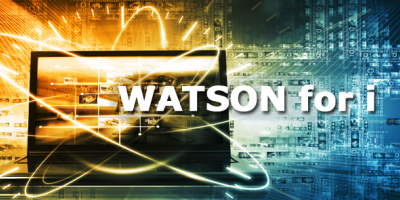IBM Watson Virtual Agent uses the Watson Conversation API to help you build automated, conversational chatbots to provide self-service experiences to customers.
In "Watson Conversation Can Generate Chatbots and Virtual Agents for Your Business, Part I," we reviewed how IBM Watson Conversation can help enterprises build chatbots that can use natural-language text and spoken input from humans to support customer-service applications. IBM Watson Virtual Agent (WVA) carries this concept a step further to provide customized tools that can help you create automated self-service environments for customers, as well as analytics tools for customer engagement.
Virtual Agent and Watson Conversation
WVA is obviously based on Watson Conversation and uses the Watson Conversation API, but all three aren't the same thing although all of them are available as cloud services.
Watson Conversation provides the means for training a Watson iteration to understand natural language expressed in selected national languages (English, French, German, Italian, Portuguese, and Spanish so far), comprehend the meaning of given phrases and sentences, and categorize each phrase and sentence according to a classification hierarchy specified by the developer or user. It also includes software mechanisms for building dialogue streams that a bot or Virtual Agent will use to converse with human beings.
The IBM Watson Conversation API is a specific tool that includes access to Conversation's capabilities to help developers construct conversational applications and deploy them to websites as a means of providing interactive services with which to engage customers. The API originates HTTP requests and returns responses in the JavaScript Object Notation (JSON) data-interchange format.
WVA is an IBM-built application system that already embodies all the capabilities of Watson Conversation, but it's flexible enough to let those deploying it turn on and off elements of its total range of capabilities (and modify it in other ways) to provide a version of WVA that is tailored for a specific business type or even an individual enterprise. It's essentially an app that lets you deploy a Conversation system without having to fully understand what's going on under Conversation's covers.
Intents and Capabilities
WVA has its own nomenclature to understand, as well as comprehending Conversation's own vocabulary. In Watson Conversation, an intent is whatever the human in the transaction is trying to express. In WVA, a capability is WVA's competence at interpreting intent. To interpret that intent, a WVA chatbot iteration will engage in a dialog, which in Conversation parlance is a blueprint of all the pathways a potential interchange between a customer and an app might follow. Dialogs are made up of individual utterances, which are human expressions Conversation can understand as isolated single concepts. Entities are terms or names of things that relate to intents in Conversation - ÂÂÂfor example, a specific product the customer might be trying to find.
IBM has provided WVA with capability packs, which are clusters of prefabricated capability groupings that contain thousands of example utterances and counterexamples. What's more, there are various versions of WVA that have been optimized for general customer service, energy, banking, retail telecommunications, and insurance (this final version available only in English currently). By selecting a version, equipping it with entity names specific to your business, and perhaps adding some dialogs you know from experience are likely to be expressed by visitors to your website, for example, you can create a Virtual Agent that is capable of handling general customer service inquiries specific to your business.
Each implementation of WVA contains four major components. The Conversation service includes all the artifacts needed to provide a capability - namely, some established intents, entities, and dialogs - as well as processing power to run the chatbot. The second component is the bot itself, already capable of handling basic functions but also including a configuration tool that lets you enter information unique to your enterprise. The third component is an interface to your company website and associated apps and databases needed to underpin the customer services you want to provide. The fourth component is a chat window that is the virtual agent interface that customers will use to communicate, available as a customizable widget. Developers can also build their own widget with a provided SDK.
WVA's Built-in Abilities
To get some idea of how WVA might function in your company's environment, let's look at a breakdown of the capabilities included in the "general customer service" implementation.
Under the general heading of account management, there are numerous basic functions a customer might access. These include the ability to change names associated with an account, what the account's privileges might include, who is authorized to make changes to the account, what the account's billing address is, what the account number is, what loyalty programs the customer has access to and the customer's eligibility, what information about the customer is part of the account, and ways of determining, redeeming, and transferring reward points to which the customer may be entitled. In addition, there are services for opening and closing accounts, making other general inquiries about the account, and changing account passwords and security questions.
Other core capabilities include the bot's ability to tell the customer it doesn't understand a question or can't provide an answer even if it does understand the question (a trait called "None of the Above"), the ability to refer the customer to a human agent (or some other service external to the bot), support for implementing the prefabricated dialogs, and the ability to create custom dialogs to either replace or supplement the prefabricated ones.
The None of the Above trait can't be turned off, by the way. It stands as a standard response for any exchange the bot can't comprehend. What can be altered is the actual dialog or action the bot is permitted to take if a None of the Above condition arises. The customer can be diverted to a special Conversation workspace that tries to match the customer's utterance to an intent the bot can understand, to a custom dialog that tries to elicit enough additional information to make the utterance comprehensible to the bot, or to some other alternate response, such as linking the customer to a human agent.
WVA also includes some of the analytic capabilities one would expect from AI like Watson. There is an engagement metrics dashboard that tracks customer interactions with each implementation of WVA you're using and provides data that can help you enhance its interactions. These metrics are updated every 30 minutes and show such data as how many conversations are taking place, how many new and returning users are engaged, what topics customers are most and least interested in, peak conversation times, interactive diagrams that show how the WVA implementation is interpreting input, what intents and entities are most in use, and what user goals the agent was unable to satisfy. It also creates a database of all interactions for further diagnosis and study.
WVA is available in two editions. Standard includes all the features discussed, while Premium adds secured data isolation features for enterprises needing that service.
WVA Requirements
WVA requires browser software installation on systems using it. These currently consist of IE version 11, the latest version of Chrome for your system, the latest edition of Firefox plus ESR 38, and Safari for Mac.
WVA Benefits
WVA provides a self-service experience that can augment your current customer service regimen and, in some cases, even replace it in time. It can reduce the expenses of providing support to customers with an all-human staff, personalize and increase customer gratification, and resolve many routine customer questions. If customer service is a key component of your business, WVA is worth some serious consideration.






















 More than ever, there is a demand for IT to deliver innovation. Your IBM i has been an essential part of your business operations for years. However, your organization may struggle to maintain the current system and implement new projects. The thousands of customers we've worked with and surveyed state that expectations regarding the digital footprint and vision of the company are not aligned with the current IT environment.
More than ever, there is a demand for IT to deliver innovation. Your IBM i has been an essential part of your business operations for years. However, your organization may struggle to maintain the current system and implement new projects. The thousands of customers we've worked with and surveyed state that expectations regarding the digital footprint and vision of the company are not aligned with the current IT environment. TRY the one package that solves all your document design and printing challenges on all your platforms. Produce bar code labels, electronic forms, ad hoc reports, and RFID tags – without programming! MarkMagic is the only document design and print solution that combines report writing, WYSIWYG label and forms design, and conditional printing in one integrated product. Make sure your data survives when catastrophe hits. Request your trial now! Request Now.
TRY the one package that solves all your document design and printing challenges on all your platforms. Produce bar code labels, electronic forms, ad hoc reports, and RFID tags – without programming! MarkMagic is the only document design and print solution that combines report writing, WYSIWYG label and forms design, and conditional printing in one integrated product. Make sure your data survives when catastrophe hits. Request your trial now! Request Now. Forms of ransomware has been around for over 30 years, and with more and more organizations suffering attacks each year, it continues to endure. What has made ransomware such a durable threat and what is the best way to combat it? In order to prevent ransomware, organizations must first understand how it works.
Forms of ransomware has been around for over 30 years, and with more and more organizations suffering attacks each year, it continues to endure. What has made ransomware such a durable threat and what is the best way to combat it? In order to prevent ransomware, organizations must first understand how it works. Disaster protection is vital to every business. Yet, it often consists of patched together procedures that are prone to error. From automatic backups to data encryption to media management, Robot automates the routine (yet often complex) tasks of iSeries backup and recovery, saving you time and money and making the process safer and more reliable. Automate your backups with the Robot Backup and Recovery Solution. Key features include:
Disaster protection is vital to every business. Yet, it often consists of patched together procedures that are prone to error. From automatic backups to data encryption to media management, Robot automates the routine (yet often complex) tasks of iSeries backup and recovery, saving you time and money and making the process safer and more reliable. Automate your backups with the Robot Backup and Recovery Solution. Key features include: Business users want new applications now. Market and regulatory pressures require faster application updates and delivery into production. Your IBM i developers may be approaching retirement, and you see no sure way to fill their positions with experienced developers. In addition, you may be caught between maintaining your existing applications and the uncertainty of moving to something new.
Business users want new applications now. Market and regulatory pressures require faster application updates and delivery into production. Your IBM i developers may be approaching retirement, and you see no sure way to fill their positions with experienced developers. In addition, you may be caught between maintaining your existing applications and the uncertainty of moving to something new. IT managers hoping to find new IBM i talent are discovering that the pool of experienced RPG programmers and operators or administrators with intimate knowledge of the operating system and the applications that run on it is small. This begs the question: How will you manage the platform that supports such a big part of your business? This guide offers strategies and software suggestions to help you plan IT staffing and resources and smooth the transition after your AS/400 talent retires. Read on to learn:
IT managers hoping to find new IBM i talent are discovering that the pool of experienced RPG programmers and operators or administrators with intimate knowledge of the operating system and the applications that run on it is small. This begs the question: How will you manage the platform that supports such a big part of your business? This guide offers strategies and software suggestions to help you plan IT staffing and resources and smooth the transition after your AS/400 talent retires. Read on to learn:
LATEST COMMENTS
MC Press Online